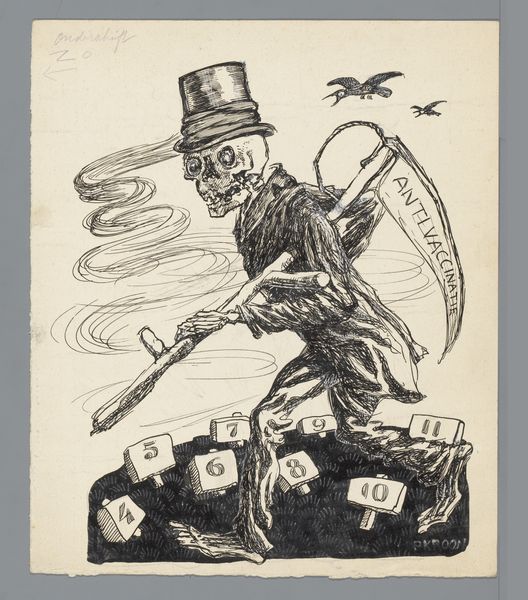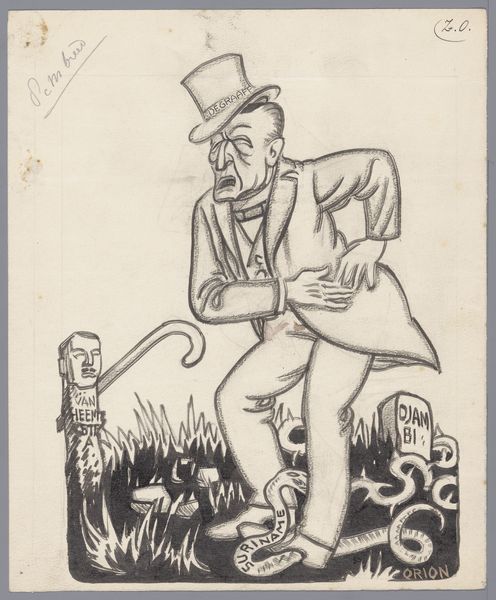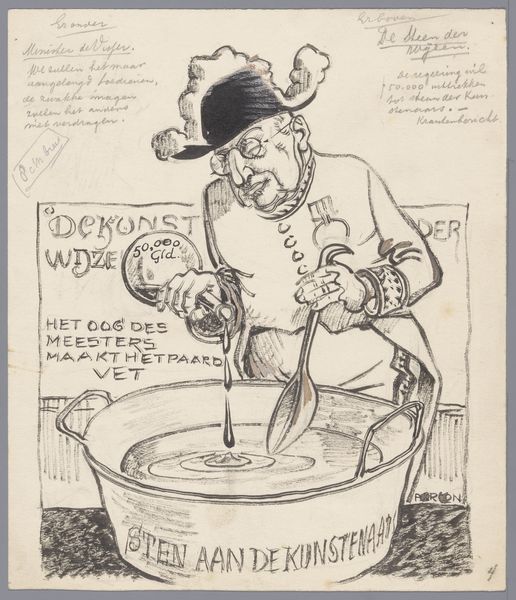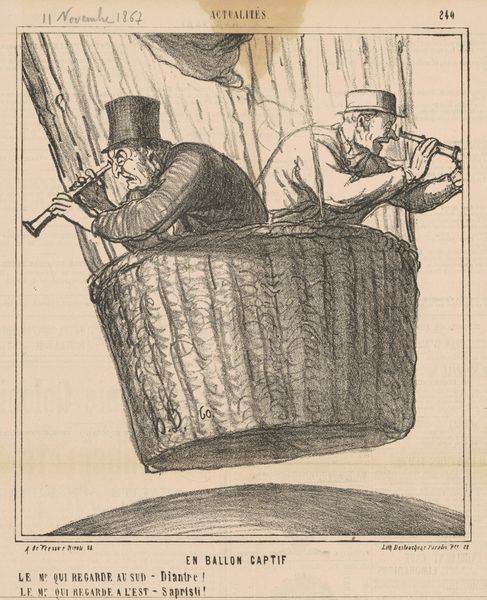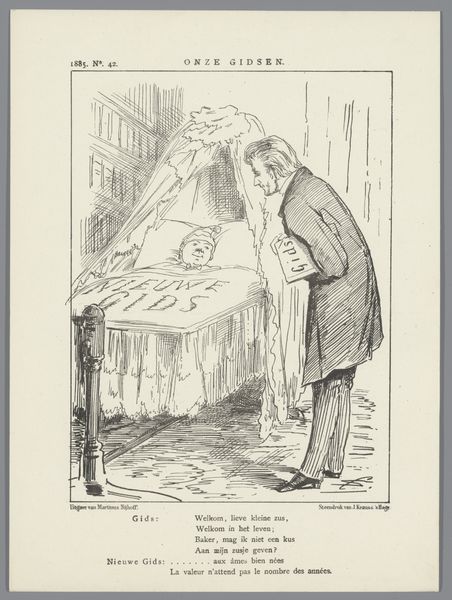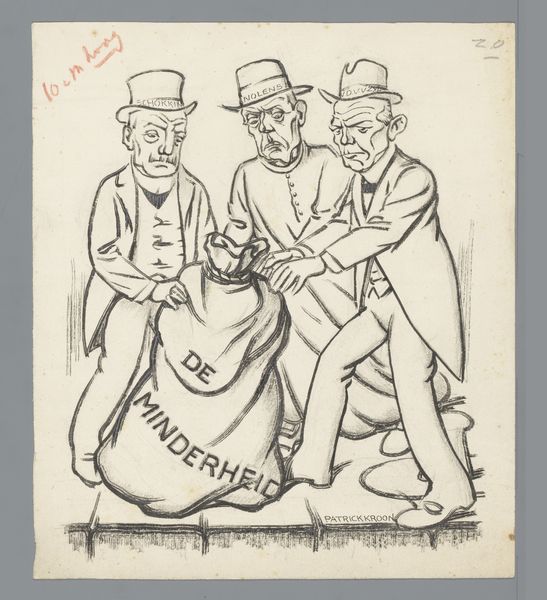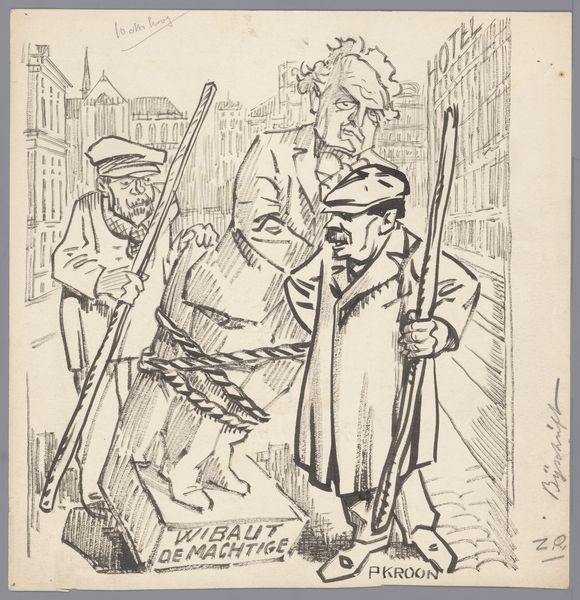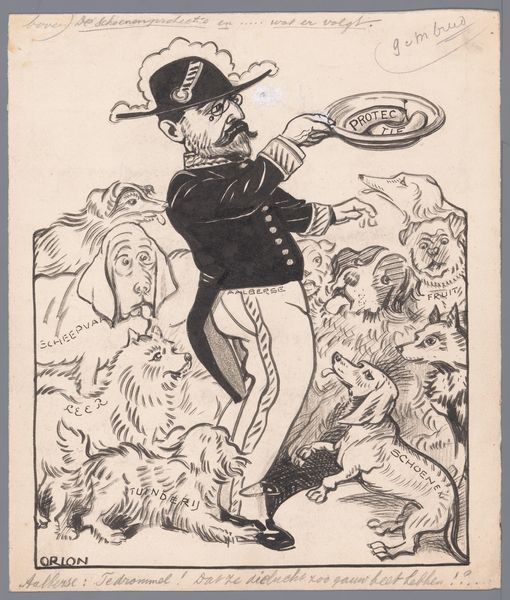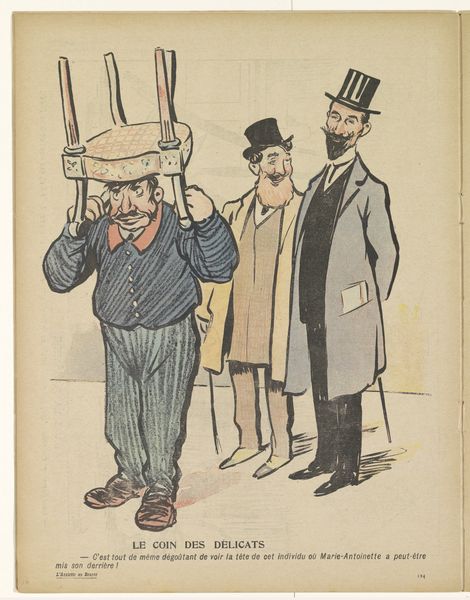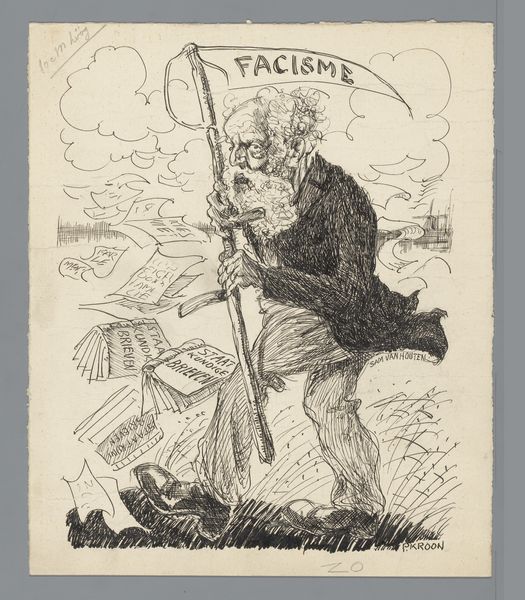
drawing, ink, pen
#
portrait
#
drawing
#
comic strip sketch
#
quirky sketch
#
caricature
#
dog
#
sketch book
#
cartoon sketch
#
personal sketchbook
#
ink
#
sketchwork
#
folk-art
#
pen-ink sketch
#
sketchbook drawing
#
pen
#
storyboard and sketchbook work
#
sketchbook art
Dimensions: height 265 mm, width 230 mm
Copyright: Rijks Museum: Open Domain
Curator: Ah, this is an interesting piece: "Cort van de Linden en de openbaarheid" by Patricq Kroon, likely dating from between 1920 and 1930. It's a drawing, made with pen and ink. Editor: My first impression is that it's a satirical piece, very quirky and expressive with that linework! There's something quite biting about the visual pun going on here. Curator: Absolutely. The figure, presumably van de Linden himself, appears as a rather old-fashioned gentleman, formally dressed with a top hat. He's gesturing towards a doghouse labeled "Patria," while a dish labeled "Openbaarheid" sits empty before him. The dog inside the house has a very burdened, maybe even suspicious, look on its face. Editor: And notice how Kroon uses hatching and cross-hatching to create a sense of depth and shadow, particularly around the face of van de Linden and the doghouse. The slight application of blue as well makes the cartoon characterization more subtle, like a melancholic memory. It avoids simple caricature in favor of something sadder, a sense of failure. Curator: The symbols are potent. The "Patria" doghouse immediately evokes ideas of nationalism, of home and belonging. But what does it mean when openbareheid, public affairs, sits neglected like empty slop, as if a sacrifice has been demanded by 'the fatherland?' The dog's position suggests "Patria" as a kind of restriction, a confined and surveilled loyalty. Editor: Exactly! The dish is placed so literally at van de Linden's feet, he seems oblivious. The open dish becomes a kind of symbol itself. Even in the rough style of this artwork, that placement is important. Is van de Linden ignoring the common people, the public that is clearly "below" him? Or maybe is that the very caricature? Curator: It’s compelling how Kroon uses what seems like a simple sketch to convey such complex political ideas about nationhood and the public sphere in early 20th century Holland. One almost expects the image to jump into motion. Editor: Yes, a deceptively simple composition. The spatial arrangement forces us to ask uncomfortable questions. Curator: Well, it’s been really eye-opening to look at this satirical statement and unpack some of the themes within it, wouldn't you agree? Editor: Certainly. Kroon's piece feels strikingly resonant still. A good reminder that these images always possess relevance across generations.
Comments
No comments
Be the first to comment and join the conversation on the ultimate creative platform.
